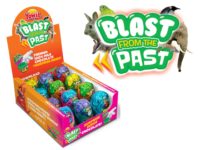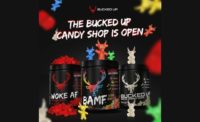Nostalgic Candy
Candy of old is new again — and that much sweeter to retailers who carve out a retro niche.
Overview
Nostalgic candy is not tracked yet by any data group,
but players in the category say that it’s growing in double digits,
especially if Internet sales — pioneering the trend and still a big
chunk of the excitement right now — are included. It seems nostalgic
candy is just part of an even bigger CPG phenomenon: many
“older” (and oft times previously extinct) brands are enjoying
a renaissance as a result of a rejuvenated interest in material things from
one’s past. It is apparent in car designs, furniture and fashion, as
well as food items and candy.
Target Audience
Baby boomers have long been thought of as “retro
magnets” — attracted to anything that reminds them of their
youth — and indeed, the label fits. Now as they approach/enter
retirement, recapturing a bit of their youth, especially through the candy
products that brought them a lot of joy, is worth even more today than a
decade ago from their increasingly sentimental perspective. The
grandchildren factor comes into play here too; they are introducing
their “old-time” candy favorites to their grandchildren.
But nostalgic candy doesn’t thrive solely with
the baby boomers. Candy marketers need to remember that Gen Xers are
parents now, and nostalgic candy will work with this crowd, too. Contrary
to their reputation, they are not too young or too fickle to have candy
favorites from the past.
Pricing/Positioning
Many of the nostalgic candy brands that are enjoying a
revival are what used to be called “penny candy.” Thus, the
price points are generally on the low end — between 10 cents and 25
cents per piece, which means that these versions of nostalgic candies work
well as changemakers.
Retailers that make a special display out of per-piece
nostalgic confections will have an advantage over the multitude of Internet
marketers selling retro candy because the latter require minimum orders
that have to be shipped.
Adjacencies
Appropriate merchandising of nostalgic candy is
determined somewhat by the packaging. If bagged, they do well positioned
with like products (caramels with caramels, taffies with taffies, etc.)
Changemakers were created for the counter or point-of-purchase. Tinned
items are perfect for gift areas such as floral or bakery.
Summer seasonal aisles (using floorstands or
carved-out shelf space near beach umbrellas or picnic supplies) represent
an excellent opportunity for merchandising non-chocolate nostalgic candy.
Seasonal Opportunities
Chocolate isn’t ruled out of nostalgic candy,
but the true “meat” of the category is non-chocolate items that
have a summer connotation to them (think carnivals, the circus, town fairs,
summertime sweet shops). Originally, kids were more likely to purchase and
consume candy when they were out of school, and thus, often out of sight of
parents and teachers. The “fun” aspect was associated with the
summer — being carefree and free to indulge. Today, many retailers
are bringing back this summertime pleasure by making nostalgic candy a
seasonal (spring and summer) section made up mostly of non-chocolate
(non-melting) confections.
Outlook
The category’s growth potential lies mainly in
retailers who can sustain the renaissance beyond the baby boomers.
Therefore, creating brand awareness and driving trial among a younger
demographic — with stronger flavors, bold colors, engaging packaging,
and recognizing the “new” nostalgic candies — will
ultimately dictate the category’s future potential. n
Merchandising Musts
Keep your eye on regional/national icons. Nostalgia
is a big hit with Americans everywhere, but it doesn’t translate into
exactly the same brands for everyone. If you’re going to get into
nostalgic candy you need to know/test the most-requested older candies of
not only the country (and your competitors), but of your store’s
particular region.
Use packaging as promotion. Nostalgic packaging of
the candies in tins and other old-fashioned style boxes and twist bags is
all part of the category’s excitement. More and more candy
manufacturers with a past are catching on — and recreating the exact
packaging look and logo of their precious candies from the past. Often,
getting this packaging out in front of consumers (even better if it’s
in its own section with even minimal signage) is all a retailer has to do
to create a nostalgia epidemic in-store.
In Praise of ‘Comeback Candy’
Highlighted comments from a candy buyer who is very
fond of his nostalgic candy set.
“We treat it as a seasonal buy.”
“It sets the day
after Easter in our stores and goes through September.”
“This will be our third straight year.”



